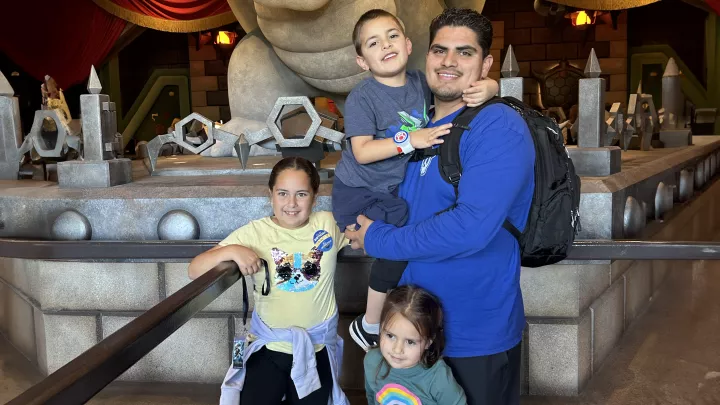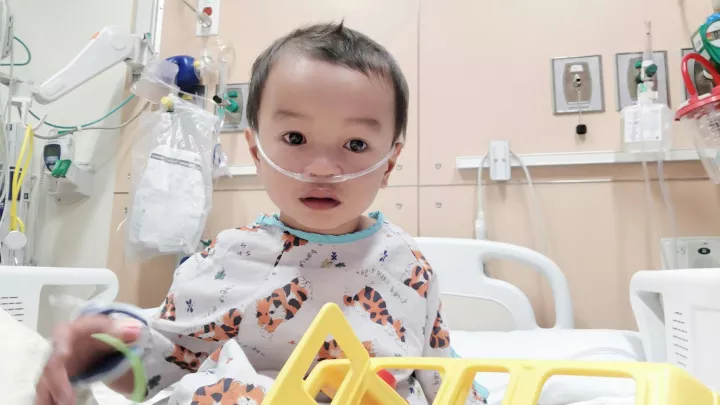
3 Keys to Assessing Cardiac Function in Neonatal Shock
Neonatal shock is an acute and potentially life-threatening condition for babies. To treat it, physicians must determine whether systolic or diastolic dysfunction—or both—is causing a lack of oxygen to the baby’s organs.
But that’s not always a simple task.
“Our clinical assessments and lab tests are limited in their ability to tell us how well a baby’s cardiovascular system is delivering oxygen to the tissues,” says Shahab Noori, MD, MS CBTI, Neonatology Section Head of Clinical Research in the Fetal and Neonatal Institute at Children’s Hospital Los Angeles. “Blood pressure is just one metric, and even that can vary widely in neonates.”
This spring, Dr. Noori gave a podium presentation on systolic and diastolic dysfunction in neonatal shock at the 2024 Pediatric Academic Societies (PAS) meeting, held in May in Toronto. His talk was part of a larger session on choosing the right medication in neonatal shock—which was the No. 3 most attended session at the entire meeting.
Below, Dr. Noori, who has authored numerous papers on neonatal hemodynamics, shares three takeaways from his presentation.
1. Serial measurements are key.
One of the critical tools in evaluating neonatal shock is point-of-care echocardiography, or targeted neonatal echocardiography (TNE). Dr. Noori—who also co-led special training workshops in this modality at PAS—is a big proponent of this tool. But it, too, has limits.
For example, to estimate a baby’s cardiac output, you need to measure the diameter of the aorta. “But if you are off by even 1 millimeter, it completely throws off your result,” he says. This can lead to prescribing a medication that actually worsens the baby’s condition.
To guard against that, Dr. Noori advises neonatologists to:
- Be aware of the normal values for the baby’s size. “If the normal value is 7 millimeters, and you’re measuring 5, double check,” he says.
- Be careful with interpreting your estimate. “If it’s really high or really low, assuming you’ve double-checked it, then it’s probably true,” he notes. “If it’s just a little bit less than normal, there’s a margin of error, so that doesn’t tell you much.”
- Take serial measurements. This is especially critical to test the results of an intervention. “If you think cardiac output is low, and you give a medication to the baby, do another echo and take the measurements again,” Dr. Noori says. “Repeat that several times over the following hours. Keep checking to make sure things are going in the right direction.”
2. Certain conditions require special attention.

For babies who have congenital diaphragmatic hernia (CDH) or have been born to diabetic mothers, it’s particularly critical to understand the heart’s systolic and diastolic function.
While most babies with CDH have pulmonary hypertension, Dr. Noori shared a case study of a neonate with CDH who had left ventricular dysfunction. He diagnosed this systolic dysfunction via TNE and placed the baby on milrinone. He then took serial TNE measurements over the next few hours. The baby dramatically improved and was able to avoid extracorporeal membrane oxygenation (ECMO).
Infants born to diabetic mothers also require special care. “If you think the baby is in shock, and you don’t look at the heart, you may choose one of the commonly used medications such as dopamine or epinephrine to make the heart pump more,” Dr. Noori says. “But up to 25% of these babies have hypertrophic cardiomyopathy, where the main problem is actually diastolic dysfunction—the heart is not relaxing to receive blood.”
If that’s the case, giving a medication with inotropic properties will make the problem worse. “For these babies, it’s especially important to check the heart to guide cardiovascular supportive care,” he adds. “And if the hypertrophic cardiomyopathy is significant, in addition to volume resuscitation, a beta blocker such as esmolol and/or a vasopressor such as vasopressin would be beneficial.”
3. Look at the patient’s history for clues.
“It’s important to think about shock in terms of: What is the underlying pathophysiology in the baby?” Dr. Noori explains. “Is it vascular resistance? Is it the heart? If it’s the heart, is contractility the problem? Is it the preload or the afterload?”
In his talk, he shared which conditions are generally associated with systolic or diastolic dysfunction or abnormal vascular tone. For example, a baby with septic shock or pressor-resistant hypotension is more likely to have a vascular resistance problem. A baby with low Apgar scores and asphyxia at birth is more likely to have poor contractility of the heart.
That patient history can help guide providers when they don’t have access to TNE. Still, Dr. Noori advises neonatologists, as well as intensivists and emergency medicine physicians, to train in this modality.
“It’s an excellent tool,” he says. “You’re the physician who is caring for the baby. You want to know how well the heart is pumping? Put your probe on and get some information, so you can provide the best treatment for the baby.”


